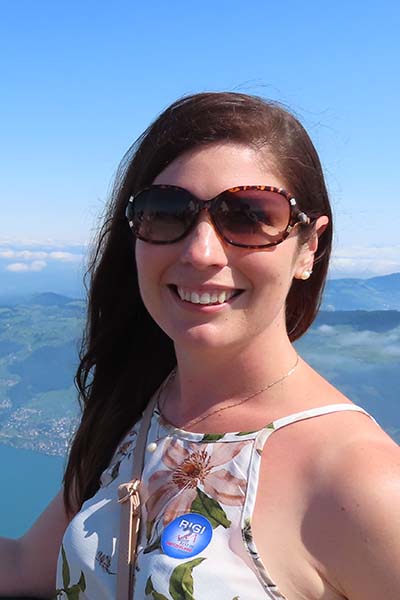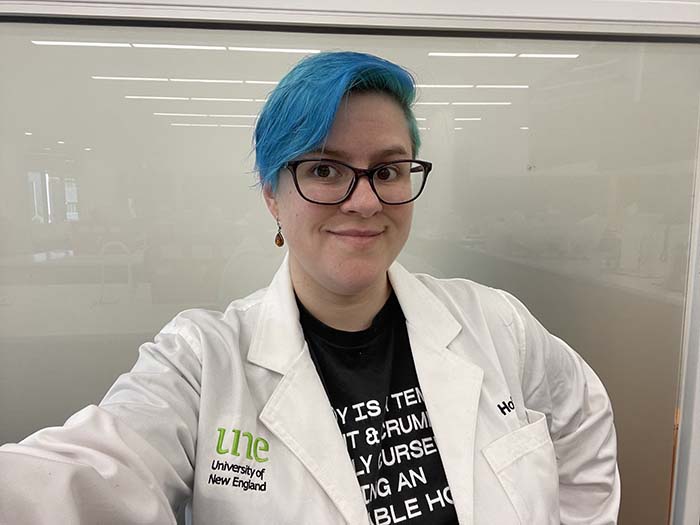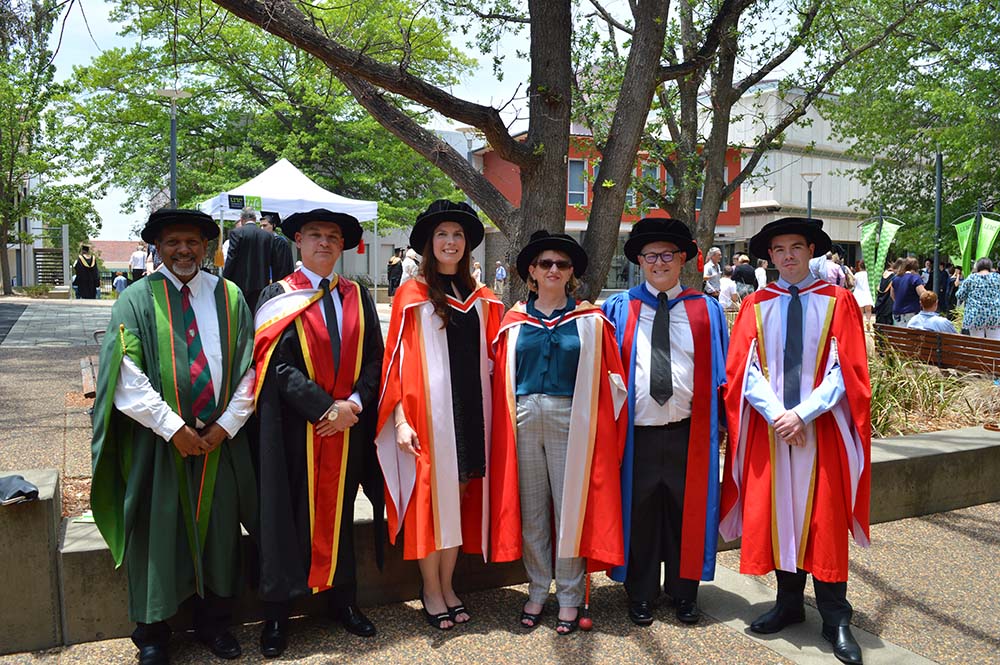The confidence to succeed: Dr Sinéad Henderson, Lecturer in Biomedical Science
 For women and girls pursuing a career in STEM, every journey is unique. For UNE lecturer in Biomedical Science Dr Sinéad Henderson, while science wasn’t an obvious choice, it’s one she says she doesn’t regret for a second.
For women and girls pursuing a career in STEM, every journey is unique. For UNE lecturer in Biomedical Science Dr Sinéad Henderson, while science wasn’t an obvious choice, it’s one she says she doesn’t regret for a second.
“When I was completing my HSC, the only STEM subject I completed was mathematics,” she says.
“I didn’t enrol in any science subjects and had gravitated towards subjects like music, art, legal studies and English. After considering what felt like a million different career options, I decided to enrol in a Biomedical Science degree.”
It didn’t take long for Dr Henderson to realise this was where she was supposed to be.
“At some point, the fact that I didn’t have a science background stopped mattering, and I ended up with some amazing like-minded friends and the confidence to believe that I could actually succeed in STEM," she says.
“Careers in STEM are often overlooked by young women, but that is not to say that they are any less capable of excelling in STEM fields than their male counterparts. STEM programs are vital to expose women and young girls to fields of study and careers that they may never have been encouraged to pursue, and that they may never have considered to be genuine career options.”
Pushing back against : Dr Holland Dougherty, Post-Doctoral Research Fellow - School of Environmental and Rural Science
 Another example of an inspirational female scientist at UNE is post-doctoral research fellow, Dr Holland Dougherty from the School of Environmental and Rural Science. While she has carved a successful career in STEM, she says her pathway into the animal science and statistical modelling fields involved quite a lot of pushing back against stereotypes.
Another example of an inspirational female scientist at UNE is post-doctoral research fellow, Dr Holland Dougherty from the School of Environmental and Rural Science. While she has carved a successful career in STEM, she says her pathway into the animal science and statistical modelling fields involved quite a lot of pushing back against stereotypes.
“When I was younger, being interested in science and maths was seen as a good thing, as long as I still fit their stereotypes for how girls should act,” she says.
“I was encouraged to be a good student, but not too good, because it was “intimidating to my male classmates” if I spoke up too much in class or did too well on exams. At the same time, I remember at one point I was struggling to understand something we were learning in maths, and rather than helping me, my teacher told me that it was okay that I was struggling because girls ‘aren't always good at maths’."
Dr Dougherty says her experiences highlight a larger pattern of societal gatekeeping in STEM.
“I think that a lot of people have this idea of who ‘belongs’ in STEM, or what areas of STEM are appropriate for certain people to pursue, and if you don’t fit that into that stereotype, you have to work twice as hard to prove you belong there; not just for gender, but along any axis where you differ from what people consider to be ‘typical’ for your career or field.”
Thankfully, Dr Dougherty’s parents supported and encouraged her dream, however not everyone is so lucky. By highlighting the achievements and capabilities of women in male dominated fields through days like International Day of Women and Girls in Science, it’s providing young women with the confirmation that there is always a place for them. Dr Dougherty says making sure there are role models for people to look up to is vital.
Finding role models that I could look up to, to say to myself, ‘well they made it, so I have a chance’, was really important, and I think it is vital to continue in that tradition.
“When I was a child, there were very few women scientists that I learned about in school or saw in the media, let alone LGBT scientists,” says Dr Dougherty.
“Finding role models that I could look up to, to say to myself, ‘well they made it, so I have a chance’, was really important, and I think it is vital to continue in that tradition.”
The potential for change: Dr Ljiljana Brankovic, Professor in Computer Science
UNE Professor in Computer Science Ljiljana Brankovic had a different experience to Dr Henerson and Dr Dougherty. Growing up in Eastern Europe, she says the barriers placed on women in STEM became more evident later in her career when she began teaching students in Australia.
“When I was growing up, I was good at maths from an early age and I was always encouraged,” she says.
“While women were still the minority, what I saw there and what I’m seeing in my classrooms now is very different.
“I understand that over in Eastern Europe, 30 to 40 percent of electrical and software engineering students are female, while the Australian average is less than 20 percent.
“I think this is very good news, because if they can do it over there, we can also do it in Australia.”
Dr Brankovic says for these figures to change, we need a major cultural shift, which is why it’s important to bring awareness to the issue through days like today.
The power of female leaders: Dr Linda Agnew, Head of School of Science and Technology
Professor in Biomedical Science and Head of UNE’s School of Science and Technology, Dr Linda Agnew, says one of the key ways to put the wheels of cultural change in motion is to ensure there are visible female role models in leadership positions.
As a female leader in STEM, I enjoy being able to use my position to mentor other women, and show them that there is always a place for them at the table.
“I began my career in STEM as a student at UNE, and over the years I have been given many opportunities to climb the ladder, which has meant I’ve been able to help other women, while also realising my own potential,” she says.
“I think it’s really important to make sure women have access to leadership opportunities, as this starts the cycle of other female scientists climbing the ranks.
“As a female leader in STEM, I enjoy being able to use my position to mentor other women, and show them that there is always a place for them at the table.”
"Have faith in your own ability" 
As for those tossing up whether a career in STEM is for them, Dr Henderson has one piece of advice.
“Let your passion and talent drive your career, and have faith in your own ability,” she says.
“Start building a network of peers so you can support each other throughout your journey, and find yourself some mentors, both male and female who will be able to help guide you through different aspects of your career. I’m grateful for the mentors who have supported me – Professor Linda Agnew being one of them.
“Being a woman in STEM, especially while you are young can have its challenges, but with passion, confidence and a supportive network, these challenges can often just be pebbles on your road to success.”


